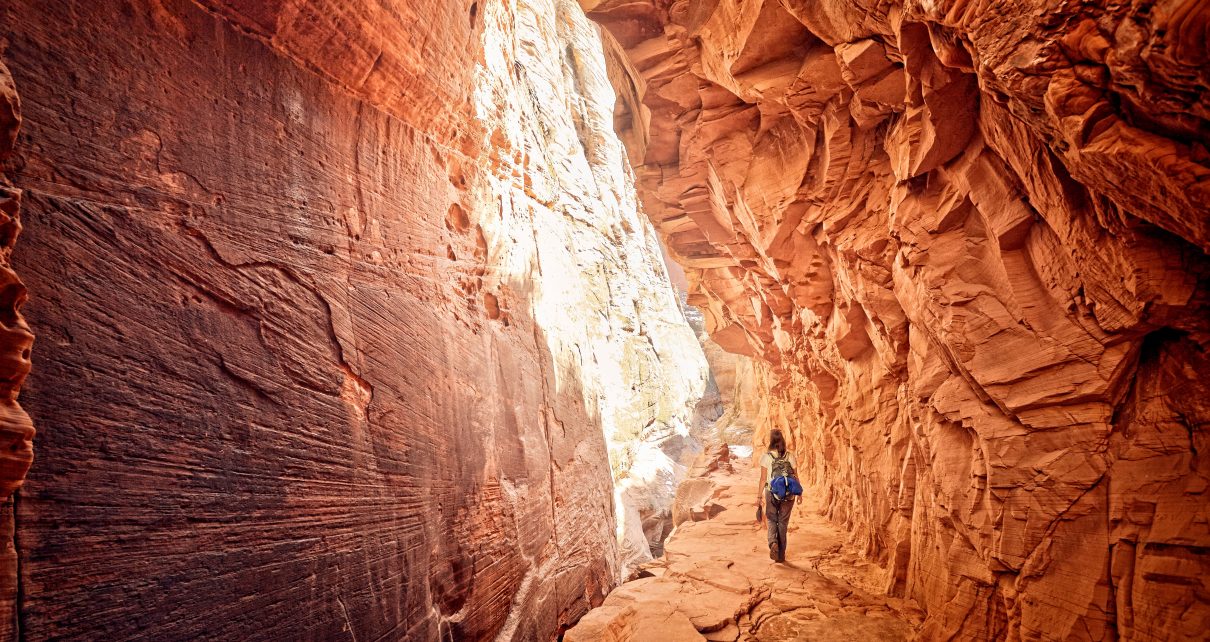The SARS-CoV-2 virus currently burning through world populations has caused us to take extreme measures to flatten the infection curve. Throughout the United States, cities, counties, and states have enacted strict social distancing measures. Schools, theaters, public facilities, and non-essential businesses are closed. Shelter-in-place orders have been issued. Few of our usual outlets for exercise and recreation are available.
On March 18th, Secretary of the Interior David Bernhardt waived entrance fees at national parks across the nation. It sounded like a helpful move that would allow house-bound adults and children to get some fresh air and soul-restoring scenery without spending too much scarce cash. But as people flock to the parks, they’re putting themselves, fellow park visitors, park staff, and surrounding communities at terrible risk.
“Many parks are designed in a way to move visitors, keep them on trails and keep them on roads,” said Kristen Brengel, vice president of government affairs for the National Parks Conservation Association. “Parks inherently funnel people to see overlooks and waterfalls and rivers. People stop at various points to view the wonderful scenery. They’re more conducive to people gathering. Parks are built for visitation.”
Thousands of people are going into Zion near Las Vegas every day, Brengel said. They gather at one of its more popular lookouts, Angels Landing, accessed by a demanding hike up a narrow trail. Echoing officials at Interior, Brengel said
.it’s understandable that people want to get outdoors. But the risk of spreading the coronavirus is a steep price for recreation, she said.
Packing into a crowded visitor center, or bunching up on a trail, defeats the purpose of social distancing and puts you and staff at risk. Predictably, Park staff have begun falling ill.
At least seven National Park Service employees have tested positive for the novel coronavirus, yet the Trump administration continues to operate the park system that attracts thousands of Americans each day.
In response to questions from The Washington Post, the agency said Tuesday that as of Monday, seven Park Service employees have tested positive for covid-19, the disease caused by the virus. That figure doesn’t include workers in the park who are not federal employees.
Many national parks have now closed due to the threat posed by the novel coronavirus, but the majority remain open. The National Parks Conservation Association has called for the rest to be closed to protect staff and visitors:
As the ongoing public health crisis continues to take its toll on America, parks are becoming too dangerous — for visitors and for the people who care for them. Park rangers are coming into contact with hundreds of people every day, personal protective equipment is being rationed and park staff are calling out sick because they no longer feel safe going to work.
It’s time to close the parks to protect staff and help slow the pandemic.
I know. This is hard. The weather’s getting better, spring flowers are emerging, and many of us are starting to wonder if cabin fever will kill us quicker than COVID-19. But as tempting as it is, this isn’t a good time to be visiting popular parks.
That doesn’t mean you can’t get some trail time in. But it does mean you need to be extremely mindful of how you go about your visit.
I asked my friend HM, a staff member at Yellowstone, for her advice. This is what she says:
Please just remember that anytime you visit a visitor’s center, entrance booth, or public restroom/vault toilet, you’re putting both yourself and others at risk. (After all, this virus spreads both while people are asymptomatic and pre-symptomatic!) If you can avoid visiting any of those locations, then recreate away!
Outdoors is great right now! But the problem is avoiding not just crowds, but also rangers. That’s why they’ve shut down most services at the large parks. Bathrooms/vault toilets are the hardest spot to avoid, and some places are even shutting those down. And of course, you end up needing to also worry about the rural communities you’re passing through, and whether you’re affecting them.
So, long story short, local outdoors or trails you can get to without needing to stop are best! If you’re legally allowed to do off-trail travel in an area, remember that you could always hike a half mile in and then hop off the trail to use the bathroom… avoiding the trailhead effect. The outdoors can still be done, but you’ve gotta plan it pretty well.
Thank you, HM!
Please remember that social distancing guidelines apply outdoors as well as in. Stay 6 feet away from other people. Wash your hands after touching surfaces like gates, fences, and door handles (you can order things like castile soap wipes or bring plenty of soap and water with you). Cover coughs and sneezes. Wear a cloth mask in public if you have one. Avoid other people when possible, and don’t gather in large groups. Don’t sit at things like picnic tables if you can’t effectively sanitize them first. And remember that in most places, there is no sit-down service in restaurants anymore.
Unfortunately, traveling with fam.ily and friends who aren’t part of your immediate household is very much not advised, as is going anywhere more than a short drive from home.
Be sure to check the National Park Service website for information and rules before you leave. This is a rapidly changing situation.
And take exceptional care of any park you do decide to visit.
The restrictions and hardships posed by our efforts to contain this virus won’t last forever. Stay healthy, stay safe, and I’ll see you out there for some real-life adventures when this is over!



